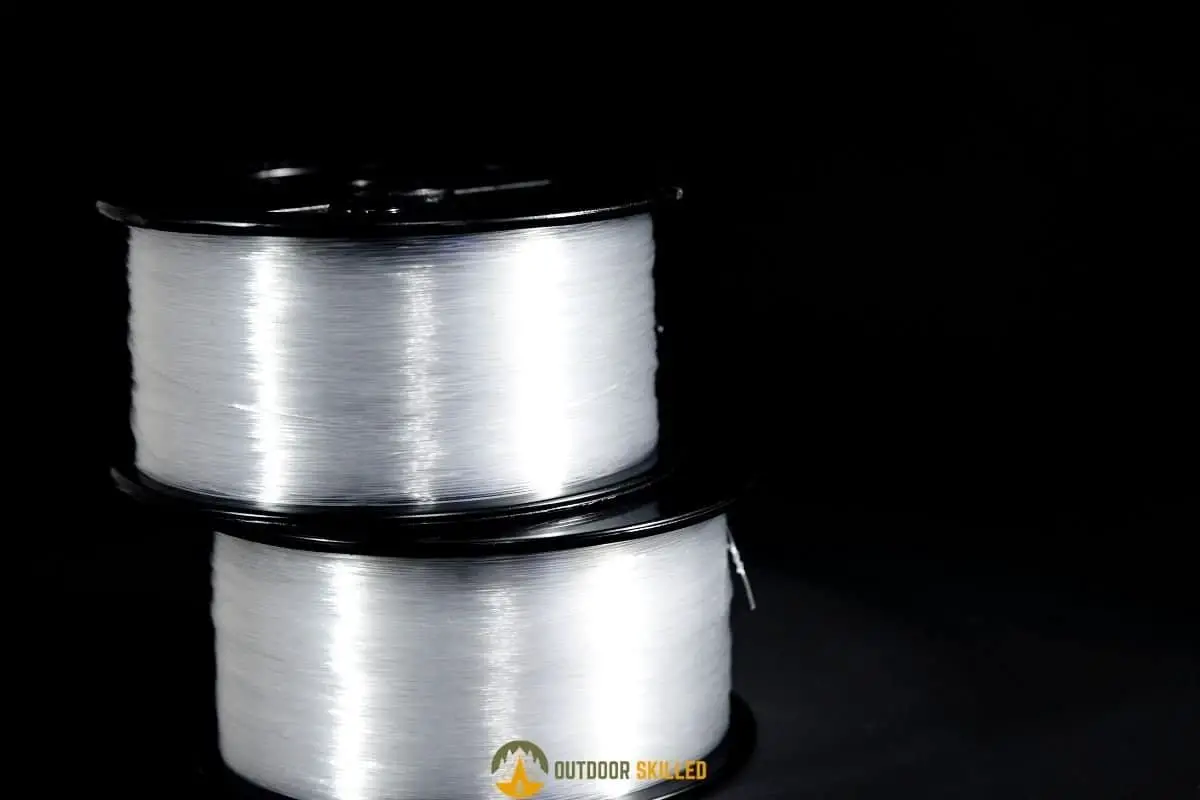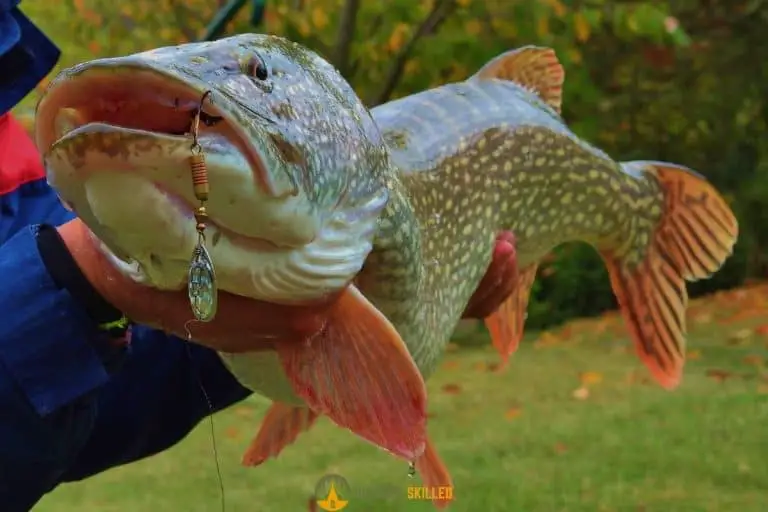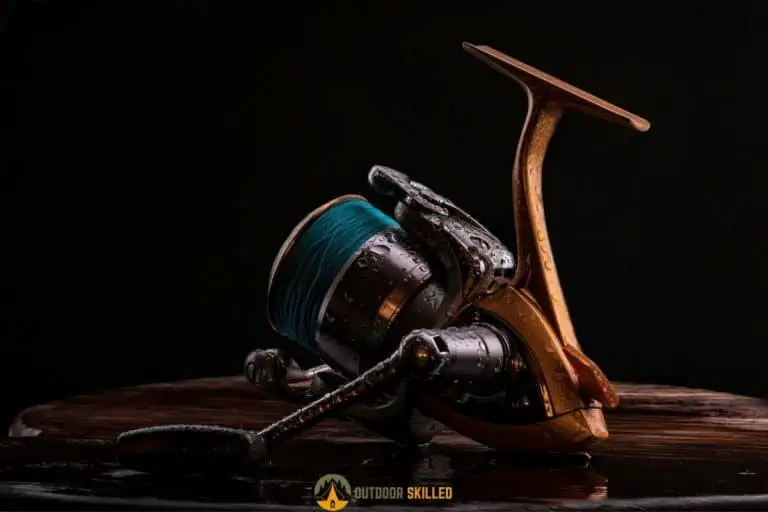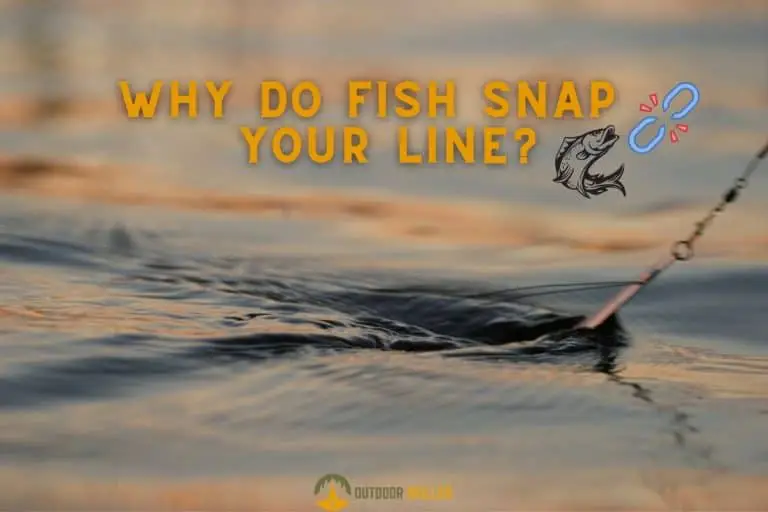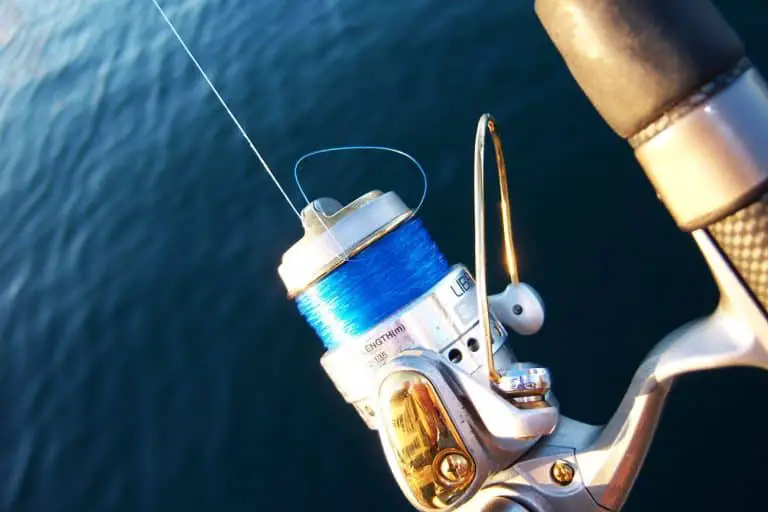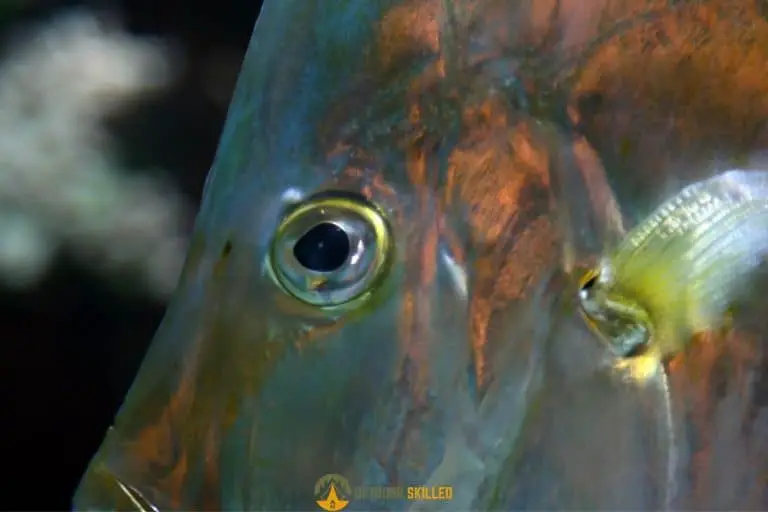Do You Need Backing For Fluorocarbon Fishing Lines?
Fluorocarbon line has become more and more popular among anglers because of its many advantages such as abrasion resistance and invisibility. However, it can be difficult to spool because of how stiff it is, so a lot of anglers may not be sure how to handle it and whether fluorocarbon can be used without backing.
So, do you need backing for fluorocarbon lines? No, you do not need to use backing for your fluorocarbon line. Fluorocarbon lines can be spooled directly without any issues if the line is under 8 lbs. However, fluorocarbon lines are more expensive than monofilament lines, so a lot of anglers use mono as backing to cut down on the cost.
Of course, this is just the short version, to learn more about backing for fluorocarbon lines, when to do it and when to avoid it as well as how to do it properly, keep on reading…
Table of Contents
What Is Fluorocarbon?

Before we get into how to handle a fluorocarbon line, you need to learn more about its properties.
- It is one single strand like monofilament lines, however, it is made out of a different material than monofilament lines called polyvinylidene fluoride.
- Fluorocarbon is known to be much harder to see in the water than monofilament, it becomes almost invisible. Which makes it a great option for stealth fishing.
- It’s not susceptible to UV light damage and it is also significantly more resistant to abrasion damage than monofilament.
- It is less stretchy than a monofilament line, which gives it more memory. This could be a drawback as it makes it more prone to tangles.
- Fluorocarbon is also denser than monofilament, so it sinks much faster.
- Fluorocarbon is not absorbent like monofilament is, which makes the line more consistent in the way it behaves while fishing.
- Fluorocarbon is known to last up to 4 times longer compared to monofilament lines.
Check the following table to learn how many times in a year you would need to change your fluorocarbon fishing line, depending on the type of line and how much you use it:
| Heavy use | Moderate Use | Light Use | No Use (Shelf Life) |
|---|---|---|---|
| 3 times a year | 1 to 2 times a year | Once a year | 7 to 10 years |
Can You Use Fluorocarbon as Mainline?
You can use fluorocarbon as your mainline on a spinning reel or a bait caster reel if your line test is under 8 lbs.
If you use a line above an 8 lbs test, you’ll be facing a lot of problems, which will negatively affect your performance. The first problem is that the heavier line will cast as well poorly. The second problem is that you’ll likely get a lot of tangles.
If you need to use something stronger than an 8 lb test, it’s recommended to use a braid and use the fluorocarbon line as a leader. You can check the best fluorocarbon lines here. These are the ones I’ve personally used and tested over the years, and I’ve tested a lot of them before settling on these, so I think you will find them very useful.
Can You Use Fluorocarbon as Backing?
You can use fluorocarbon as backing for braided lines. You can do that by tying the fluorocarbon line onto the spool first, then securing the braided line to the fluorocarbon line.
It’s important to note that in a smaller reel, you can’t use fluorocarbon lines as much as you want. Also, since fluorocarbon lines are costly, it’s more preferred to use them as a leader line.
How to Handle Fluorocarbon Lines?
Fluorocarbon lines are stiffer than other types of lines, so it has high memory. This can make it difficult to spool on a reel as it causes issues such as line twists. But if you learn to spool it correctly and use a good line conditioner to keep it smooth, you’ll find it a lot easier to manage.
How to Correctly Spool Your Reel to Avoid Line Twist?
Understanding fully how to spool your reel can help you avoid a lot of problems. Here are the steps you need to take:
Loading the Reel
- Determine if the reel turns clockwise or counterclockwise by holding it the same way you would if you were fishing and turning 2-3 times.
- The way the wheel turns is the way the line will be spooled onto the reel, while the opposite direction will be the way the line will peel off the spool when you cast.
- Open the bail arm by flipping the small handle up.
- Pass the line straight through the guides and secure it by using an arbor knot.
- Cut any extra line with line cutters or scissors, while ensuring that you leave at least a 1⁄4 in of additional line from where you tied the knot.
Spooling the Reel
- Close the bail and lay the spool on the floor with the label facing up to make sure that the line enters the reel properly.
- Take a rag, wet it with line conditioner and pinch the line lightly with the rag, about 8-12 inches above the reel, then pull the line tight.
- Crank the reel slowly, and then allow the line to slip through your pinched fingers.
- Continue loading the line slowly, while applying light pressure and stopping every 20-30 cranks to check your line for twists.
- Fill the spool with the line until it is 1⁄8 inch away from the edge.
- Cut the line close to the supply spool, while leaving a small amount of excess line then secure the line on the spool.
What Is the Benefit of Using a Line Conditioner with Fluorocarbon Line?
Keeping your fishing equipment well maintained is vital to your fishing performance.
Since the fluorocarbon line is known to have high memory, it’s important to use line conditioner to keep the line smooth. This will help prevent damage to the line and make it last longer.
Line conditioners come in small bottles that can be easily stored or kept in your tackle box. It’s also very easy to use, you simply give a few sprays directly onto the line, then wait a few minutes before using your line.
Related Questions
Do You Need to Soak the Fishing Line Before Spooling?
Yes, soaking your fishing line in a bucket of warm water will help when you come to wind the line on your spool. This will reduce tangles and ensure better casting performance. You can learn more about why and how to soak your fishing lines here.
How Often Should You Re-spool Your reel?
If you’re using a braided line, it’s recommended to re-spool every 1 to 2 years on average. If you’re using monofilament or fluorocarbon, it’s recommended to re-spool every 3 to 6 weeks.
Is Braided Fishing Line Stronger Than Monofilament Fishing Line?
Yes, the braided line is stronger than the monofilament line. Braid is made up of several strands of fiber woven together to make a single line, while mono is made using one continuous strand of line. Braid also has a small diameter compared to breaking strength, which means that it can carry a lot more weight than mono.
How Much Backing Should a Reel Have?
A reel should have 50 to 100 yards of backing, depending on reel size and line capacity. There needs to be enough space to spool at least 100 yards of line on top of the backing and fill the reel until it is 1⁄8 inch away from the edge.

